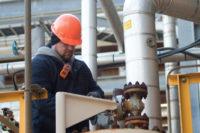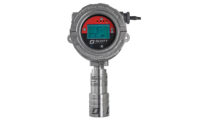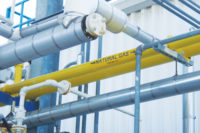Spotlight on safety
A quick Google search of “gas detection in the oil & gas industry” proves that the industry has ample available solutions to help keep their workers safe from hazardous gases. In fact, most gas detection manufacturers have entire web pages, brochures, videos and more showcasing their specific solutions for the rapidly growing industry.
And it seems that the solutions are only getting more sophisticated. Phrases like “real-time tracking of gas readings; employee location data; man-down events” are now regularly part of the conversation when talking about how to keep workers safer in the often daunting environments.
There is surely a heightening sense of awareness when it comes to increasing the safety of workers in the industry. For instance, more common now are safety stand-downs promoting safety and health practices at oil and gas exploration and production sites across the U.S. In a press release from OSHA in regards to a stand-down being held in Arkansas, Louisiana, New Mexico and Texas, John Hermanson, OSHA’s regional administrator in Dallas, highlights the purpose of the event. “This safety stand-down is an important effort to bring heightened safety and health awareness for workers in the oil and gas industry to identify and eliminate work-related hazards,” he said. “There is tremendous value in dedicating time during a workday to make a concerted effort to provide training.”
But regardless of the number of safety solutions, or how brightly the spotlight shines on worker safety, the question remains — what part do gas-related incidents play in the rising numbers?
Key risks
Let’s start with what the industry is talking about as far as the key risks being faced. Just before the end of last year, National Public Radio published an article, “On-The-Job Deaths Spiking as Oil Drilling Quickly Expands,” citing a 23-percent increase in hired workers between 2009 and 2012. As baby boomers retire and drilling increases, oil and gas companies are hiring.1
The article goes on to quote Ryan Hill, who heads the oil and gas extraction program at the Centers for Disease Control and Prevention’s National Institute for Occupational Safety and Health, saying “During times of high demand like now, there are new workers brought into this industry, and these are workers that may not have relevant training and experience.”
Another persistent threat to worker safety is transportation accidents. More workers in the oil and gas extraction industry died from on-the-job truck and car accidents than from any other cause, according to a report by safety analysts with the National Institute for Occupational Safety and Health. Supporting that fact, BP states on their website that driving operations are a significant part of their operations and that vehicle-related incidents remain one of the key risks facing the industry.
Breaking down the data
But, since numbers tend to speak louder than words, let’s look at the data. With intent to dig a bit deeper on the numbers provided by the BLS, one blog broke them down as follows. 2
The majority of the 2012 fatalities (74) came from oil and gas support activities, 39 occurred while drilling wells, and 25 during oil and gas extraction.
- Of the 74 fatalities from oil and gas support activities, 44 were transportation-related, occurring on roads, railways, waterways, airplanes, or being struck by a vehicle.
- Of the 39 fatalities related to drilling wells, 10 were from transportation incidents, eight from falls, six from fires or explosions, 10 from contact with objects and equipment and three from harmful exposures.
- Of the 25 oil and gas extraction deaths, eight came from transportation incidents, six from fires/explosions, five from falls and four from contact with objects and equipment.
Although “gas-related incidents” are not clearly spelled out, three incidents involving harmful exposures are mentioned, as well as more than 10 incidents as a results of fires or explosions, which are often tied to the presence of gas.
So what part do gas-related incidents play in the rising numbers?
The research suggests maybe not as big a part as the other factors. Perhaps the gas monitoring solutions being used in day-to-day operations are more reliable than ever — operating as they should and protecting workers from harmful gas levels. Perhaps the message is finally getting across that no matter the instrument, it must be properly used in order to be effective. And safety managers might finally be utilizing the data that gives them visibility into the field to know how their instruments are being used, what gas levels their workers are exposed to, etc.
Zero is the goal
It is important to note that this article reflects research regarding the probable cause of deaths on the job in the oil and gas industry. If we truly knew exactly why and how each and every life was lost on the job, we might be closer to the day when no worker loses his or her life just by going to work. Until then, as part of the safety industry, we should be driven by the fact that that, no matter the cause, each and every life lost on the job is unacceptable. After all, the only number that is acceptable is zero.
References
1. http://www.npr.org/2013/12/27/250807226/on-the-job-deaths-spiking-as-oil-drilling-quickly-expands



